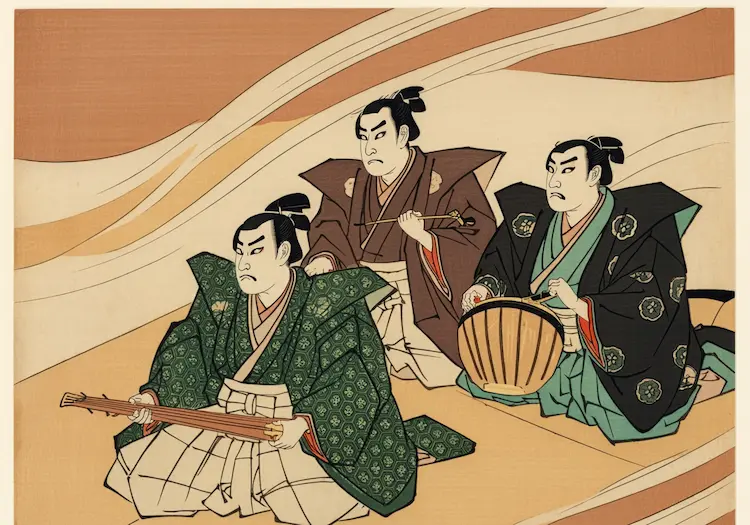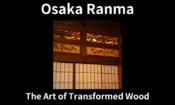The Traditional Music and Performances of Nara
Nara, the ancient capital of Japan, is a treasure trove of cultural heritage. Among its many wonders, traditional music and performances stand out as a vibrant reflection of its history and community spirit. From the elegant tones of gagaku (imperial court music) to lively local festivals, Nara’s cultural offerings tell stories of a time long past, connecting us to the roots of Japanese identity. In this article, we’ll explore the enchanting world of Nara’s traditional music and performances, uncovering their origins, significance, and the tireless efforts to preserve them for future generations.
1. Gagaku: The Soulful Sound of Ancient Nara
One of Nara’s most iconic musical traditions is gagaku, a classical form of music that traces its roots back to the Nara period (710–794). Imported from China and Korea, gagaku evolved into a uniquely Japanese style and became the ceremonial music of the imperial court and Buddhist temples.
- The Structure of Gagaku
Gagaku is a sophisticated blend of music and dance. It encompasses two main components:- Kangen – an instrumental ensemble featuring instruments like the shō (mouth organ), hichiriki (double-reed flute), and ryuteki (dragon flute).
- Bugaku – a dance performance accompanied by gagaku music, often telling stories of mythological or historical themes.
- Timeless Instruments
Gagaku’s unique sound comes from a combination of instruments:- Wind instruments: Shō, hichiriki, and ryuteki.
- String instruments: Biwa (Japanese lute) and koto (13-stringed zither).
- Percussion: Taiko (drum) and shoko (small gong).
Today, gagaku continues to be performed at key cultural and religious ceremonies in Nara, a testament to its enduring legacy.
2. Spring Elegance: The Kasuga Wakamiya On-Matsuri Festival
If you want to see the cultural heartbeat of Nara, look no further than the Kasuga Wakamiya On-Matsuri, a festival that has been celebrated annually since 1136. This event is a living museum of traditional performances, where music, dance, and ritual converge to honor the gods and bring the community together.
- A Festival Like No Other
Held every December, the On-Matsuri showcases a variety of traditional arts:- Bugaku (court dances)
- Dengaku (rustic dances celebrating agriculture)
- Sarugaku (the precursor to modern Noh theater)
- Processions featuring historical costumes and vibrant parades.
- Cultural Significance
The festival reflects a deep reverence for nature and divine protection, a theme that resonates throughout Nara’s traditions. Attending this event offers a rare opportunity to witness centuries-old rituals in their original form.
3. Local Traditions: The Heart of Nara’s Community
Beyond grand ceremonies, Nara’s local traditions offer a glimpse into the daily lives and beliefs of its people. These performances are deeply rooted in the region’s history and reflect its spiritual and agricultural heritage.
- Goryo-e
This ritual aims to appease restless spirits and prevent calamities. Participants play taiko drums in a lively procession, creating an atmosphere of joy and reverence. - Rokusai Nenbutsu
A Buddhist tradition performed during funerals and Obon (a festival honoring ancestors). Chanting, accompanied by rhythmic drumming, fosters a spiritual connection between the living and the departed. - Dengaku
This agricultural performance celebrates the planting and harvesting seasons. It’s a colorful display of music and dance, embodying the community’s gratitude for a bountiful harvest. - Okinamai
Known as the “Old Man’s Dance,” Okinamai is performed during local festivals to pray for longevity and prosperity. Its slow, deliberate movements exude a sense of timeless wisdom.
4. The Cultural Impact: Why Preservation Matters
Nara’s traditional music and performances are more than entertainment—they are lifelines to Japan’s past and symbols of its cultural identity.
- Deep Connections to Faith and Daily Life
These traditions serve as a bridge between the spiritual and the secular, providing communities with a sense of belonging and continuity. - Preservation Efforts
Local communities, cultural organizations, and schools in Nara actively promote and teach these art forms. By doing so, they ensure that future generations can experience the beauty and meaning of these traditions.
Conclusion
From the ethereal sounds of gagaku to the communal spirit of local festivals, Nara’s traditional music and performances offer a window into a world where history and culture are alive and thriving. Whether you’re drawn to the grandeur of the Kasuga Wakamiya On-Matsuri or the intimate charm of a village Okinamai, experiencing these traditions is a journey into the soul of Japan.
So, the next time you visit Nara, immerse yourself in its vibrant cultural tapestry—you might just find yourself inspired by the echoes of history.









